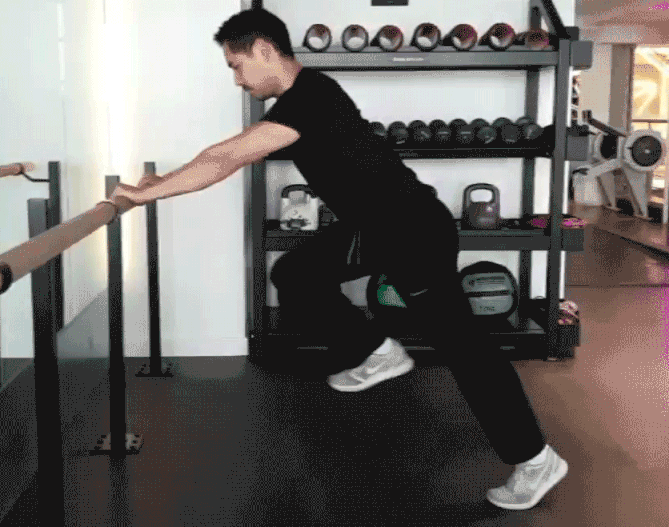In the grips of World Cup fever, Elite PT James Ralph shares the off-season training advice that will make next season your best ever
It’s coming home – that much is obvious. And so, when the glow of England’s inevitable victory crosses over to the returning five-a-side and Sunday League seasons, you need to be ready. Basically, if you plan on spending the rest of the off-season trading gym sessions for yet another bottle of Rose, the subs bench awaits. OK, the occasional Cote de Provence is very much encouraged, but, armed with a few training principles you can take serious strides towards your goals of match-winning performances every week. You may lack Messi’s trickery, but Ronaldo’s Rolls Royce physical attributes are well within your reach. Game on.
Strength – Sets: 4-7 / Reps: 1-5 / Rest: 2-6mins
Strength is the number one quality that allows an athlete (that’s you, by the way) to improve any part of their physical game. It provides the foundation to build power, speed, change of direction, deceleration and even injury prevention.
In football, obviously the focus of your strength training should be on lower body strength, the foundation being your squat and deadlift. And, because football is a moving sport rather than a static one, improving your single leg strength with exercises like split squats will also transfer to improved on-pitch performance.
To the uninitiated, maximal strength is the largest amount of force that can be produced under no time limit. So, no matter how long it takes you to drag the bar up your thighs for that heavy deadlift – it still counts.
There are strength parameters that I aim for all of my athletes to accomplish, such as a 1.5-2 x bodyweight squat and a 2-3 x bodyweight deadlift. Start your progress to these numbers by sticking to these simple principles in your next session:
My personal favourite strength protocols are: strong lifts 5×5 and Jim Wendler’s 5/3/1. Follow these protocols and your baseline strength will continue to grow and allow you to shift your training emphasis to…
Power – Sets: 3-5 / Reps: 1-5 / Rest: 2-6mins
While strength has its, um, strengths, the speed and time restraints of World Cup-worthy performance mean you need to be able to harness this strength, . Thor “The Mountain” Bjornsson may be the World’s Strongest Man, but he wouldn’t make it into Iceland’s starting XI. Power is paramount on the pitch.
The equation “Power = Force x Velocity” tells us that power is the result of force multiplied by velocity (speed). In layman’s terms you need to lift heavy weights quickly. Just lifting the heaviest weight won’t cut it, because the speed will be slow. Conversely, if you choose a weight that is too light, and move it fast, this won’t generate maximum power either. You need to find the sweet spot between the two.
When training for power, the most important thing to ensure is 100% effort in completing the lift as fast as possible. Loads will be lighter than when training for strength, but rep targets should stay low – 1-5 reps. Rest should be even higher between sets: think around 5mins. However, to ensure your power has the resolve to last into injury time it makes sense to add power endurance sets, too. That means more reps and less rest.
A simple, yet very effective method of improving power you can do with minimal equipment is jumping. No, I don’t mean trying to bash out 500 box jumps in 30 seconds – to improve your Rate of Force Development (RFD) you need to use maximum effort to jump as high or as far as possible. Think of this as training for towering headers in the box, or diving saves between the sticks.

Speed – Sets: 6-9 / Reps: 1-3 / Rest: 2-6mins
There is an expression in sport that “speed kills”. Being first to a loose ball or accelerating away from an opponent are situations where speed wins you games. Speed can be broken down into various elements, but in a sport when the average sprint lasts for just 17 metres, it makes sense to concentrate on acceleration.
Much of acceleration is simple – the more relative strength an athlete has, the better equipped they are to excel in acceleration. Relative strength is strength relative to bodyweight, not absolute strength, hence why I could (I hope!) beat a sumo wrestler, despite his much larger absolute strength.
Where developing acceleration gets tricky is the correct body positioning. Over stride will limit your propulsion forward and mean you spend too long in the air between strides. Conversely, keeping your feet too close to your body will mean less of a knee drive, leading to less force. It’s a fine balance and one too complicated to explain here. However, carrying out a wall drill (pictured) under the watchful eye of a Third Space PT will teach you the proper mechanics and soup-up your sprint speed over short distances.
Combine all three of these physical traits in the gym before next season kicks off and all but guarantee yourself the most-improved player gong come the end of season awards dinners. Strength, power and speed are the physical tools you need to take your game from Sunday to Premier League.
*Book a PT session with James in Third Space Soho for a 1-2-1 speed workout like no other.










